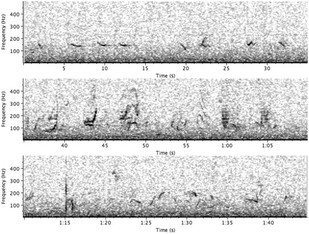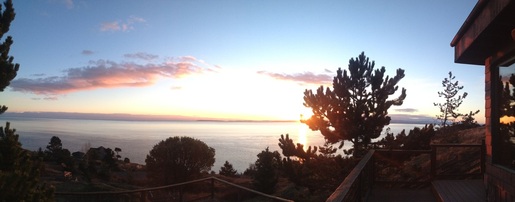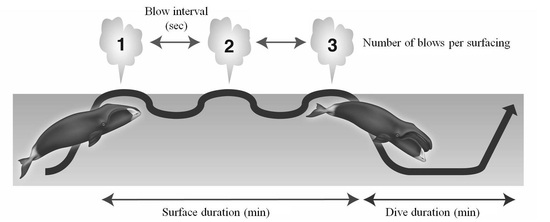Last winter I spent 3 weeks here at the Whale Cabin writing the first draft of a thesis chapter. This year that chapter has been accepted for publication (cue acceptance dance!) and I have found my way back to the cabin to address my reviewers comments and suggestions. My paper is reporting on the results of my research into the effects of seismic operations on surface-respiration-dive behaviour of bowhead whales(see diagram below); made possible through my access to an incredible database on bowhead behaviour. Most of what we know about bowhead behaviour has been learned from dedicated behavioural observation studies conducted from small aircraft. But how do you study the behaviour of a whale from an aeroplane? I must admit that though I have now spent 3 seasons working on an aerial survey programme for bowhead whales and other Arctic marine mammals, though I have not had the privilege of collecting detailed behavioural data. Conducting systematic line transect surveys to estimate distribution and abundance of whales is quite different to circling for hours over the same area trying to keep tabs on the same whale. Anyone who has tried to follow a whale, dolphin or porpoise from small boats or even from shore have an appreciation of how difficult it is to keep tabs on these animals, let alone manage to measure the time they spend at the surface, how many times they breath and how long they dive for.

As I have been working through the revisions to my paper this week I have been listening to these old recordings, imagining what it was like back then, circling over groups of whales for hours at a time. Up to now I have known these whales through numbers in my spreadsheets; but listening to these audio recordings have now brought my spreadsheets to life.
You too can share this experience, simply click the spectrogram to the right and join the aerial observers circling over bowhead whales off the Alaskan coast in the early 1980s.
Till next time..... Thanks!




 RSS Feed
RSS Feed